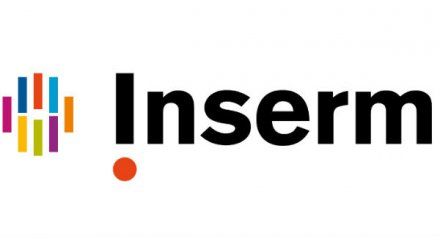预约演示
更新于:2025-05-07
MIF x NLRP3
更新于:2025-05-07
关联
2
项与 MIF x NLRP3 相关的药物作用机制 MIF抑制剂 [+1] |
原研机构 |
非在研适应症 |
最高研发阶段临床前 |
首次获批国家/地区- |
首次获批日期1800-01-20 |
作用机制 MIF抑制剂 [+1] |
在研机构- |
原研机构 |
在研适应症- |
非在研适应症 |
最高研发阶段终止 |
首次获批国家/地区- |
首次获批日期1800-01-20 |
100 项与 MIF x NLRP3 相关的临床结果
登录后查看更多信息
100 项与 MIF x NLRP3 相关的转化医学
登录后查看更多信息
0 项与 MIF x NLRP3 相关的专利(医药)
登录后查看更多信息
31
项与 MIF x NLRP3 相关的文献(医药)2025-01-01·BioMed research international
Molecular Mechanisms of Intervertebral Disc Degeneration Induced by Propionibacterium acnes.
Review
作者: Chen, Huan ; Miao, Haixiong ; Li, Shaojin ; Lin, Jinzhi ; Tan, Yong ; Ye, Dongping ; Yang, Weichao ; Xu, Yude
2024-11-01·International Immunopharmacology
MIF aggravates experimental autoimmune prostatitis through activation of the NLRP3 inflammasome via the PI3K/AKT pathway
Article
作者: Feng, Rui ; Zhang, Fei ; Zhang, Song ; Liang, Chaozhao ; Meng, Tong ; Zhang, Meng ; Jin, Chen ; Meng, Jialin
2023-12-31·Hematology
Polymorphisms of inflammation-related genes and susceptibility to childhood leukemia: evidence from a meta-analysis of 16 published studies
Review
作者: Tang, Xiufu ; Liu, Cui ; Zeng, Qiuping ; Ren, Haoyan ; Xie, Yongwu ; Liu, Ting
2
项与 MIF x NLRP3 相关的新闻(医药)2023-10-20
·生物谷
随着研究的深入,大家越来越认可,阿尔茨海默病(AD)是一种多因素疾病,受到遗传、生活方式和环境因素的多重影响。
随着研究的深入,大家越来越认可,阿尔茨海默病(AD)是一种多因素疾病,受到遗传、生活方式和环境因素的多重影响。
肠脑轴研究已经确认了肠道微生物与AD之间的相关性,使用AD模式小鼠5xFAD的粪菌移植(FMT)研究表明,肠道微生物与AD的一些病理特征有关,如空间记忆和成年后的海马神经发生(AHN)受损[1],但是目前,还没有直接证据证明肠道微生物与AD的因果关系。
在Brain杂志今天刊登的一项研究[2]中,来自爱尔兰科克大学、伦敦国王学院和意大利IRCCS Fatebenefratelli研究中心的国际研究团队将AD患者的粪便菌群移植给年轻成年大鼠后,出现AD核心认知症状以及AHN受损,首次证实了肠道微生物诱导AD发生的因果关系,并且强调了AHN受损在其中发挥关键介导作用。
研究人员在意大利IRCCS Fatebenefratelli研究中心招募了69例AD患者和64例认知功能正常的对照群体,采集了血液和粪便样本。
AD患者血浆中的白介素-1β(IL-1β)、炎症小体标志物NLRP3和巨噬细胞迁移抑制因子(MIF)显著增加,表明了他们全身炎症水平的增加。此外,粪便与肠道炎症有关的钙卫蛋白的水平也显著增加。肠道微生物方面,AD患者与对照群体的的肠道微生物α和β多样性没有显著差异,但是AD患者的丁酸盐产生菌的相对丰度下降,致病共生菌脱硫弧菌属的相对丰度升高,这一点和此前在AD转基因小鼠中的发现相似[3]。
肠道微生物特征与简易精神状态评估(MMSE)评分相关,其中短链脂肪酸产生菌粪球菌属的丰度与MMSE评分为正相关关系,脱硫弧菌属和戴阿利斯特菌属的丰度与MMSE评分为负相关关系。
AD患者和对照群体在门和属水平上的肠道微生物差异(C)及不同微生物与MMSE评分的关联(D)
接下来,研究人员分别将AD患者和对照群体的粪菌移植给了肠道微生物耗尽的年轻成年大鼠,平均而言,40%的人类供体的微生物在大鼠体内定植,移植后,大鼠肠道中78个属的细菌发生显著变化。与对照群体FMT大鼠相比, AD患者FMT大鼠的脱硫弧菌属丰度呈现出与人类样本相似的特定差异。
虽然AD患者FMT大鼠没有出现肠道炎症,但粪便含水量增加,结肠长度缩短,结肠近端隐窝增生,隐窝深度增加,结肠和回肠上皮负责分泌黏液的杯状细胞数量减少。
同时,AD患者FMT大鼠在莫里斯水迷宫和新物体识别等多个认知功能测试中表现差劲,与AD相关认知障碍的表现一致,将人类供体的情况与大鼠的AD行为表征相关联,进一步证实了FMT对认知功能产生了影响的假设。
AD患者FMT大鼠(红)和对照群体FMT大鼠(蓝)在莫里斯水迷宫测试中的表现差异
认知功能测试的完成依赖于AHN,这种独特的神经元可塑性形式是认知功能的关键介导因素,AHN受损也是AD发病机制的早期特征,在人类中,早于海马中的神经原纤维缠结和β淀粉样蛋白(Aβ)斑块形成[4,5]。
研究人员确实发现,AD患者FMT大鼠的齿状回中新神经元减少,处于增殖状态的和未成熟的神经元也均减少,与对照群体FMT大鼠相比,神经炎症程度相近,此时两组大鼠大脑的海马和皮层中都还没有出现斑块沉积。这些结果排除了神经炎症的潜在影响,凸显了肠道微生物对AHN的重要影响,并且强调了此前的发现,即认知功能和AHN受损早于Aβ沉积。
由于AHN无法在活人中进行检测,研究人员采取了体外实验的方式,让人胚胎海马祖细胞(HPC)暴露在AD患者和对照群体的血浆中,虽然HPC的平均细胞密度不受影响,但处于增殖状态的比例下降,神经元分化7天后,成熟和未成熟的神经母细胞比例也下降,还表现出明显不同的形态学特征,总神经突长度增加,也就是说,神经元的增殖、分化和形态均受到了影响。
经AD患者(红)和对照群体(蓝)的血浆暴露,增殖状态(Ki67)HPC、成熟(MAP2)和未成熟(DCX)的神经母细胞比例差异
这些特征也和MMSE评分存在关联,增殖、成熟和未成熟的神经元标志物水平与MMSE评分呈正相关关系,脱硫弧菌属和戴阿利斯特菌属的丰度与未成熟神经元标志物水平呈负相关关系。
最后,研究人员对接受FMT的大鼠的盲肠和海马进行了代谢组学分析。毫无疑问,AD患者FMT大鼠和对照群体FMT大鼠的代谢组特征明显分离,涉及到氨基酸组氨酸及其衍生物乙酰组氨酸、氨基己二酸、琥珀酸和色氨酸代谢物犬尿酸等等的变化,这些也都曾在之前的研究中有所体现。
因此,总的来说,这项研究表明,AD相关症状可以通过肠道微生物由AD患者转移到年轻健康的大鼠中,证实了肠道微生物与AD发生的因果关系,使得我们对AD机制的理解向前迈出了重要一步。
由于研究显示,肠道微生物可能是通过损害AHN的方式造成了AD相关认知障碍,早于Aβ等病理特征的发生,因此,这一新发现可能会为在AD早期或前驱时期即进行个性化干预提供可能。
参考文献:
[1] Kim N, Jeon S H, Ju I G, et al. Transplantation of gut microbiota derived from Alzheimer’s disease mouse model impairs memory function and neurogenesis in C57BL/6 mice[J]. Brain, Behavior, and Immunity, 2021, 98: 357-365.
[2] Stefanie Grabrucker, Moira Marizzoni, Edina Silajdžić, et al. Microbiota from Alzheimer’s patients induce deficits in cognition and hippocampal neurogenesis, Brain, 2023, https://doi.org/10.1093/brain/awad303
[3] Chen Y, Fang L, Chen S, et al. Gut microbiome alterations precede cerebral amyloidosis and microglial pathology in a mouse model of Alzheimer’s disease[J]. BioMed research international, 2020, 2020.
[4] Moreno-Jiménez E P, Flor-García M, Terreros-Roncal J, et al. Adult hippocampal neurogenesis is abundant in neurologically healthy subjects and drops sharply in patients with Alzheimer’s disease[J]. Nature medicine, 2019, 25(4): 554-560.
[5] Salta E, Lazarov O, Fitzsimons C P, et al. Adult hippocampal neurogenesis in Alzheimer’s disease: A roadmap to clinical relevance[J]. Cell Stem Cell, 2023, 30(2): 120-136.

微生物疗法临床研究
2022-07-18
Completion of IND enabling studies with lead compound MFC-1040 by late 2022
Target for series B round financing by early 2023 to fund clinical development
GOSSELIES, Belgium, July 18, 2022 /PRNewswire/ --
Apaxen S.A., a privately-held biotechnology company, developing novel next generation NLRP3 inflammasome inhibitor drugs for treatment of chronic inflammatory and auto-immune diseases, announced today that it has appointed Graham K. Dixon, PhD as Chairman of its Board of Directors and that it is preparing for clinical testing of its lead product MFC-1040.
The appointment of Dr Graham Dixon as Chairman is an important step in the transformation of Apaxen from a pre-clinical to a clinical stage company. During his successful carreer in C-suite management positions at companies such as Galapagos, Addex Therapeutics and Mithra Pharmaceutical, he was instrumental to the regulatory approval of three pharmaceutical products, twelve proof of concept studies and ten clinical stage licensing deals. He is an experienced non-executive director and board chairman as well as an advisor to several venture capital organisations and their portfolio companies.
In addition, Apaxen expects to complete IND enabling pre-clinical testing of its lead NLRP3 inflammasome inhibitor MFC-1040 by end of 2022 and aims to raise series B round financing by early 2023 to fund the clinical development plans of the company.
Bart Wuurman, CEO of Apaxen, stated:
"We are very pleased to welcome Graham as Chairman of Apaxen's Board of Directors with his experience and extensive track record of leading biotechnology companies through strategic periods of growth. He will be a great asset for the company entering its phase of clinical development and we look forward to working with him."
Graham Dixon, newly appointed Chairman of Apaxen, comments:
"I am very excited to join the Apaxen team. With its novel approach to inhibiting NLRP3 inflammasomes, the Company is moving into the next stage of growth and we will be looking for new high quality investors to support the company financially. I look forward to guiding Apaxen during this exciting time in the Company's development and supporting the team to achieve our mission of helping patients with severe inflammatory and autoimmune diseases."
About Apaxen
Founded in 2018, Apaxen raised €5.4 million since its A round funding in 2019 from a syndicate of VC investors and with the support of the Walloon region to develop a pipeline of NLRP3 inflammasome inhibitors with a novel mechanism of action, for treatment of chronic inflammatory and autoimmune diseases.
Apaxen's clinical candidate MFC-1040 is an orally bioavailable and selective small molecule NLRP3 inflammasome inhibitor, which has demonstrated efficacy in multiple animal models of chronic inflammatory disease () and pulmonary fibrosis (). MFC-1040 acts by blocking the interaction between intracellular Macrophage Migration Inhibitory Factor (MIF) and NLRP3 to inhibit formation of NLRP3 inflammasomes (), key drivers of innate immunity and implicated in many inflammatory and auto-immune diseases. The novel Mode of Action of MFC-1040 has potential benefits for patients over other NLRP3 inflammasome inhibitors in clinical development.
The Apaxen team combines the experience required for clinical development of its products and is supported by a world-class team of scientific advisors.
Contacts
Apaxen
Bart Wuurman, CEO
T: +31 64 66 23 735
E: [email protected]
48, Rue Auguste Piccard,
B-6041, Gosselies, Belgium
LifeSpring Life Sciences Communication, Amsterdam, the Netherlands
Leon Melens
T: +31 6 538 16 427
E: [email protected]
Logo:
SOURCE Apaxen
分析
对领域进行一次全面的分析。
登录
或

生物医药百科问答
全新生物医药AI Agent 覆盖科研全链路,让突破性发现快人一步
立即开始免费试用!
智慧芽新药情报库是智慧芽专为生命科学人士构建的基于AI的创新药情报平台,助您全方位提升您的研发与决策效率。
立即开始数据试用!
智慧芽新药库数据也通过智慧芽数据服务平台,以API或者数据包形式对外开放,助您更加充分利用智慧芽新药情报信息。
生物序列数据库
生物药研发创新
免费使用
化学结构数据库
小分子化药研发创新
免费使用


